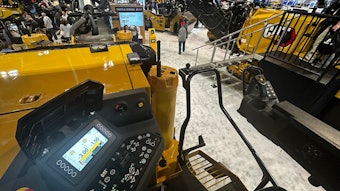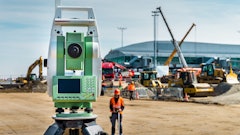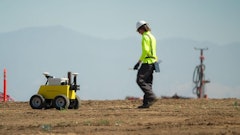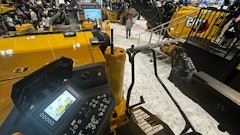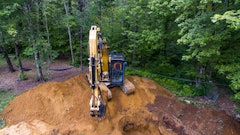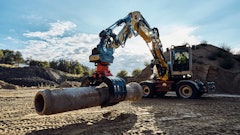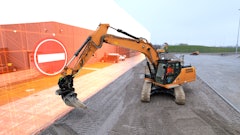
As the world speeds into the digital era, every industry faces an extensive choice: adapt or get left behind. Construction is one of those industries known for sticking to the old ways of doing things. But even here, change is knocking at the door, pushing construction companies to get with the times and embrace digital technology.
As the CEO of a software development agency and a passionate advocate for innovation in construction, I've spent the past seven years working to bridge the industry's digital gap. I want to address the main challenges preventing or slowing the industry's digital innovation.
I will provide examples from my experience for every challenge to avoid sounding like an abstract research article.
1. Change Resistance: Construction has been done the same way for ages. Convincing people to switch to digital tools is like convincing your grandma to use a smartphone. People are hesitant and need a lot of convincing. With the average age in the U.S. construction industry at 42 and rising, older workers especially resist change. They often find it challenging to adapt to high-tech solutions and fear job displacement.
Our story: The owners and senior management are motivated and want to introduce new processes. Middle management and senior specialists who have worked there for decades resist change. The most significant resistance comes from IT departments, which are the most bureaucratic in construction companies.
2. Regulations: Are a big deal in the construction world, with each state having its own rules. To break into the industry, you've got to dive into state-specific regulations and tackle legal hoops. In this tightly regulated field, having a flashy AI-powered product won't mean much if it can't handle every tiny detail of state regulations.
Our story: Simple tasks like tracking labor’s meals and breaks on a construction site require more than 20 settings to cover all possible cases because of state-based regulations.
 @bannafarsai - adobe.stock.com
@bannafarsai - adobe.stock.com
3. Lack of standardization: In contrast to the above point, while the industry is very regulated, it lacks standardization. The internal processes vary from company to company. While they operate in the same industry and do the same job, every company has different internal processes. The process change becomes more complicated since a construction project typically involves multiple players, and you can’t force the same process/tool to be adopted by all players.
Our story: After onboarding our first two to three customers, we thought we had already covered all industry cases and everything should go smoothly. However, upon reaching 40 customers, our analysis revealed that less than 10% joined without customization.
4. Unions: You should never underestimate the role of unions. While unions are crucial in advocating for workers' rights and safety standards, they can also hinder the adoption of new technologies and practices. At times, unions may resist changes that could alter traditional job roles or require additional training for their members. Consequently, navigating the landscape of construction innovation often involves engaging with unions, understanding their concerns, and finding ways to collaborate effectively. This requires a delicate balance between embracing progress and addressing the legitimate concerns of workers, ensuring that innovation benefits both the industry and its workforce.
Our story (not fun this time): Once, with our team, we were all set to pop the champagne to close our biggest deal, but it shouldn’t have happened. We didn’t consider the power of unions in California, and they simply rejected accepting any process change on their jobsites.
5. Safety: Safety cannot be overstated in the construction industry. Given the inherent risks involved, safety should be a top priority in every aspect of project implementation. While a comprehensive discussion of safety is beyond the scope of this post, it's essential to highlight three critical areas for consideration in construction projects.
Firstly, ensuring the availability and proper use of appropriate tools and safety equipment is necessary for minimizing risks on-site. Secondly, compliance with specific certifications mandated by OSHA (Occupational Safety and Health Administration) is crucial to meet regulatory standards and maintain safe working conditions. Lastly, day-to-day procedures include labor training, daily instruction sessions, safety checks, attestations, and safety reports.
While it could sound like safety is one of the challenges preventing change, it also is one of the critical areas where new technology and AI can have the most significant impact.
Our story: When we think about safety, we first think about hard hats and other equipment that supports labor work on construction sites. But quickly, we learn that different forms, attestations, and other bureaucracy are equally important. This safeguards employers during inevitable incidents on jobsites.
6. Legacy software: A significant challenge in the construction industry is the prevalence of old legacy software. Many construction companies rely on decades-old tools, some still stuck in the on-premises realm and slowly transitioning to the cloud.
Even a simple API change needed for integration could take years, or the provider may claim it's not feasible. For instance, giants like QuickBooks, SAGE, and Vista offer cloud-based solutions. However, a significant portion of their customer base remains hesitant to migrate from their traditional on-premises solutions.
Our story: Over 70% of our integration efforts and resources were consumed by maintaining outdated on-premise integrations. A fresh example was QuickBooks Desktop integration, which we implemented through a third-party integrator company that discontinued support, leaving us just three short months to build our integration.
 @Gorodenkoff - adobe.stock.com
@Gorodenkoff - adobe.stock.com
7. Tech savviness: In the world of construction innovation, one of the significant challenges is the varying levels of tech-savviness among employees. While some workers readily embrace new digital tools, others may struggle to adapt. This discrepancy can prevent the smooth adoption of innovative solutions. Moreover, the industry's varied workforce adds another layer of complexity to tech integration efforts.
Overcoming this barrier requires intense training programs and ongoing support to ensure all employees possess the required skills.
Our story: Quickly after shipping our first application version, we learned that in the U.S., there is a significant labor force that either doesn’t speak English or is illiterate. So, we quickly adopted an intuitive UX and added large icons for visibility.
8. Unique Field Conditions: Are the next challenge in the world of construction innovation. One big problem is ensuring a good internet connection at construction sites. Sometimes, sites are in remote areas or crowded cities, making it hard to get a strong signal. Also, workers need tools and tech to move around quickly as they work in different parts of the site. Plus, sometimes there's no internet at all, so tools need to be able to work offline. Another thing to consider is battery life — tools must last long in harsh conditions. These challenges highlight the need for intelligent solutions that work well in real-world construction settings.
Our story: After shipping the first version of our mobile application, we quickly learned that “we have network connectivity” doesn’t mean “we always have network connectivity”(enlightening, right?). Very soon, full autonomy offline-mode support becomes critical.
 @aboutmomentsimages - adobe.stock.com
@aboutmomentsimages - adobe.stock.com
9. Long adoption process: All construction projects are time-critical. Before adopting a new process or integrating new software, it could take months to make decisions and select the right software, then a few more months for training and the pilot project.
Finally, there's the waiting game for the final decision and optimal transition period, adding further delays to the adoption process.
Our story: Our first big customer onboarding took 18 months; we naively hoped this was an anomaly but soon discovered it was a norm. Typically, the slow due diligence decision-making process takes up to six months. Then come some change requests, extending the timeline by another six months or more. Only after that, with training and small pilots, does the total adoption take over 18 months. You may see key people and stakeholder changes in this period, leading to duplicate efforts and wasted resources.
10. Jargon: Lastly, let's not forget about construction jargon. It's like a language of its own; without it, it's hard to enter the conversation. When construction folks start talking, especially to those from other industries like tech, it can feel like they're speaking a different language altogether.
My story: I felt overwhelmed by all the construction terms when I first started. Distinguishing between shell and general contractors or understanding the nuances of salaried, hourly, and piece-rate payroll structures was like white noise in my ears.
Thankfully, my colleagues from the construction industry patiently helped me navigate this jargon jungle and make sense of it all. While the construction industry is ready and willing to embrace digital transformation, one must understand all the challenges before entering this space. After seven years of working on construction digitalization, speaking to hundreds of people, and visiting construction field projects, I have only started understanding their daily challenges and jargon.
Nevertheless, the future of construction is bright, and AI is leading the way. By embracing AI and investing in new technologies, construction organizations can improve efficiency, reduce costs, and stay ahead of the competition.
